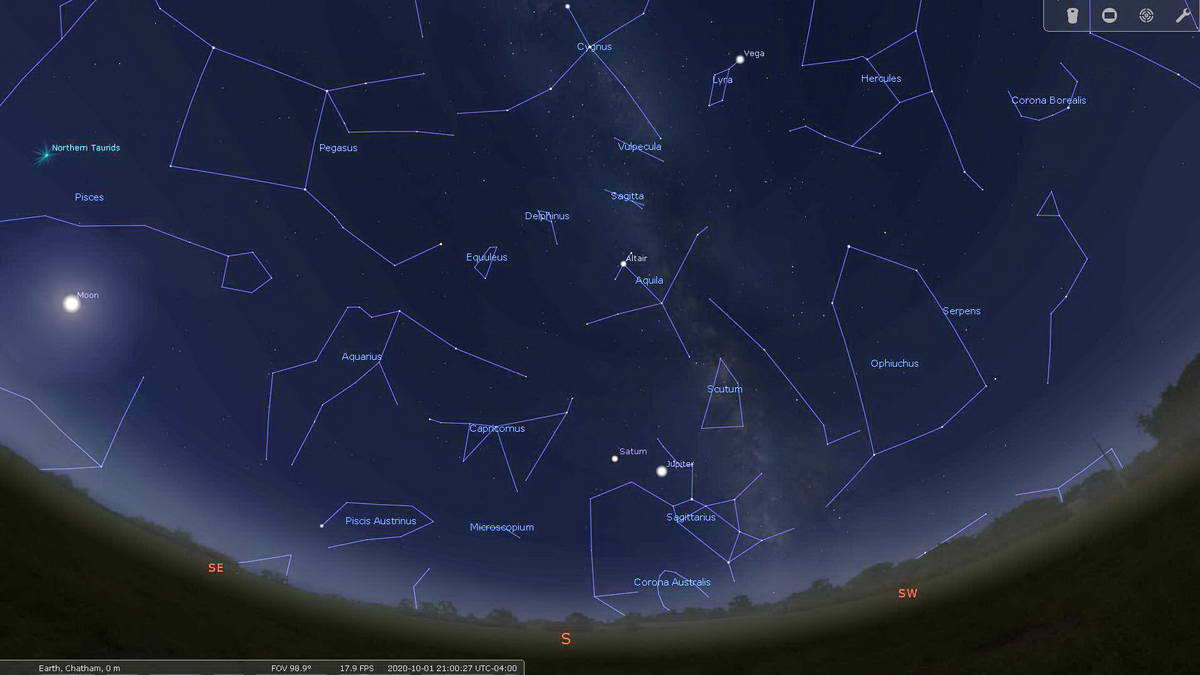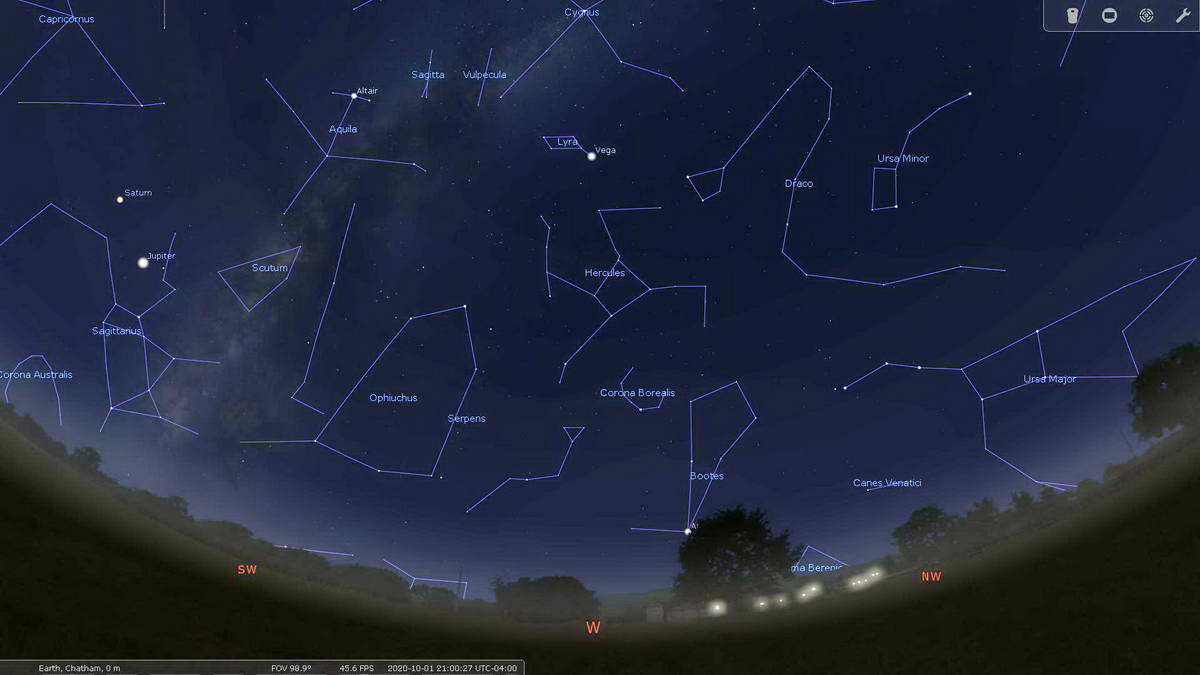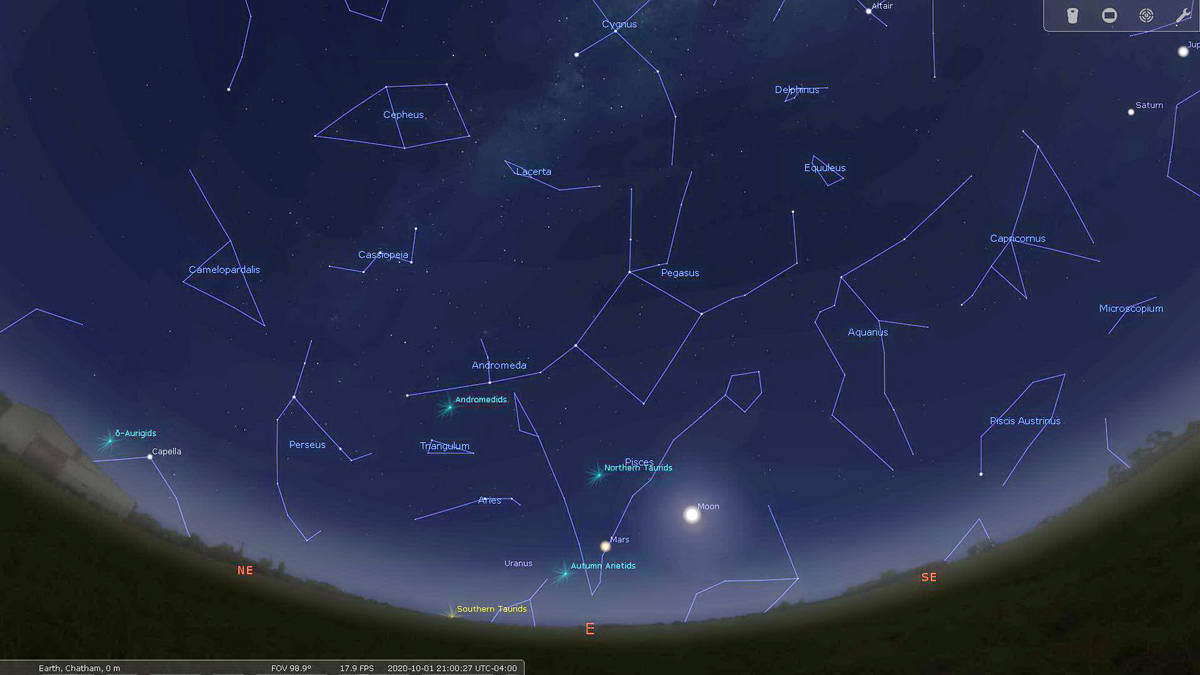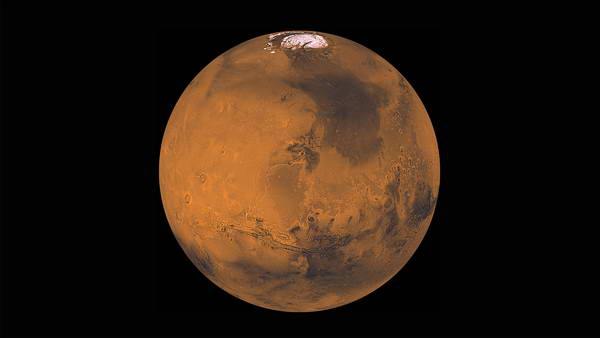October’s Night Sky is a Treat for Your Eyes!
The end of summer heralds the return of shorter days and long, cozy evenings. The month’s best days consist of brilliant blue skies framed by the bold colours of the autumn leaves. The flavours of hot chocolate and pumpkin spice ascend to places of prominence. The setting Sun gives way to cool, crisp night air, chasing people back indoors, or, for those wishing to enjoy the night skies, into bundles of warmer clothing. The October night sky in the Northern Hemisphere is a beautiful tapestry that does not disappoint.

Looking south in the October night sky, around 9 PM, Saturn and Jupiter still reign supreme. Slightly to the east of the Milky Way, they are above the horizon until around midnight this month. Their time above our horizon in 2020 is rapidly coming to a close. For those with a telescope, or binoculars and a steady hand, these are good nights to try to identify Jupiter’s four Galilean moons. A handy tool can be found here which well help discern which one is which. With luck or (better yet) planning, observers will be able to see shadows cast on the planet, or watch the moons disappear and reappear as they move behind the gas giant.

Looking west, there are no visible planets at this time. The bright star Arcturus, which anchors the constellation of Bootes, is just above the western horizon as the night sky darkens. High overhead the bright star, Vega, is slipping into the western quadrant, heralding the last looks at the summer skies. An interesting note about Vega is that it once was, and will again be, the star that marks the North Pole. Currently, this honour falls to Polaris but, because of the wobble of the earth on its axis, the stars that mark the Earth’s north and south poles change over a 26,000-year cycle. When Vega’s turn next arrives, it will be about 5 degrees off of true north but will be the brightest of any of the pole stars in the rotation. Nasa provides an introduction to this topic for those who wish to know more.

Looking north now, the bowl of the Big Dipper in Ursa Major is pointing down, towards the northern horizon. For those who find that they are not sure where the North Star is, this constellation provides a nice pointer. Take the two stars on the bottom of the bowl, and draw an imaginary line in the night sky. From mid-northern latitudes, the line will go very near a medium-bright star about halfway up in the night sky. This is Polaris, the North Star! If doubts still remain, waiting about a half-hour will allow the sky to advance a little. All of the stars will change position relative to the horizon, with the exception of Polaris. Once found, it’s always easy to find on subsequent nights.

Looking to the east, the most prominent object is the red coloured planet, Mars. Early in the month, it is low above the horizon as the night falls Since it is farther out, Mars takes longer to orbit the Sun than does the Earth. Once a year, the two planets make a close approach (known as “opposition”) as the Earth catches up and passes its more distant cousin. Orbits are also not perfectly circular, but slightly egg-shaped. When things line up just right, It’s possible for the Earth to be farther out from the Sun than its average distance while at the same time Mars is closer than “normal” to the Sun. If the closest approach of the two planets has the right geometry, Mars will appear slightly larger in telescopes than it does at other times of the year, and slightly brighter in the sky. This close alignment happens every 15 to 17 years.
On October 6, Mars and Earth will be at the closest approach for this year, and it’s a good one. At just over 38,000,000 miles from our planet, it’s one of the closer distances that the Earth and Mars can achieve. The distance was slightly closer in 2018, but the 2020 approach is one not to be missed. For those who can only see Mars with the naked eye, the change in distance will be hard to notice as the planet still will only look like a bright star. But for those with telescopes, even smaller ones, the planet will reveal detail such as polar caps, large scale land features, and clouds. In the past, observers have even been able to witness dust storms that eventually grow to obscure most of the entire planet. Again, NASA provides a much more in-depth look at how the orbital geometry of Earth and Mars works out.
October begins with a full moon on the 1st. Mid-month, on the 16th, the Moon is new, and not visible, as it begins a new cycle. The Lunar Cycle runs 29.5 days, so this month brings a second Full Moon on the 31st.
The Orionids Meteor Shower runs the full month, with the peak on the night of October 21-22. These meteors will appear to radiate from the constellation Orion and are best viewed in the early morning hours. The Moon will have set before midnight, leaving ideal viewing conditions. The shower occurs as the Earth passes through the orbital plane of Halley’s Comet, and dust particles leftover from its previous trips through the inner solar system collide with our atmosphere. An observer could see a rate of around 20 meteors per hour with a clear night sky.
The October night sky is an easy one to work with. Earlier nights make it easier to share the night sky with the kids. Longer nights allow the diehards to wait out the hours to get their first glimpses of the winter sky. The bugs have finally gone and it’s easy to feel the change in the seasons. Check out last month’s article, too, as many of the things that were visible in September are still up as the sky darkens during the October evenings.
Starmaps courtesy of Stellarium for PC / Mars and Jupiter images courtesy of NASA
Published on September 22, 2020 / Information provided based on approximately 40 degrees north lattitude






0 Comments